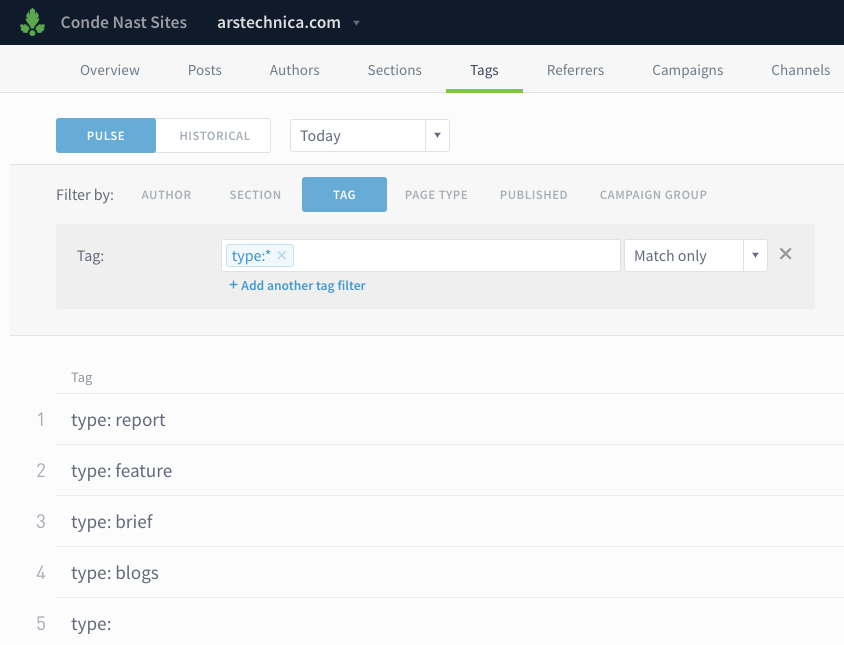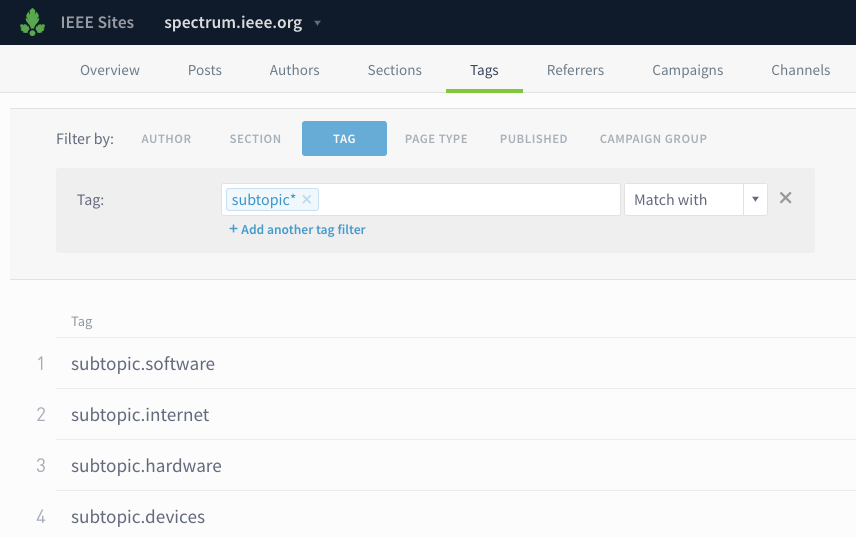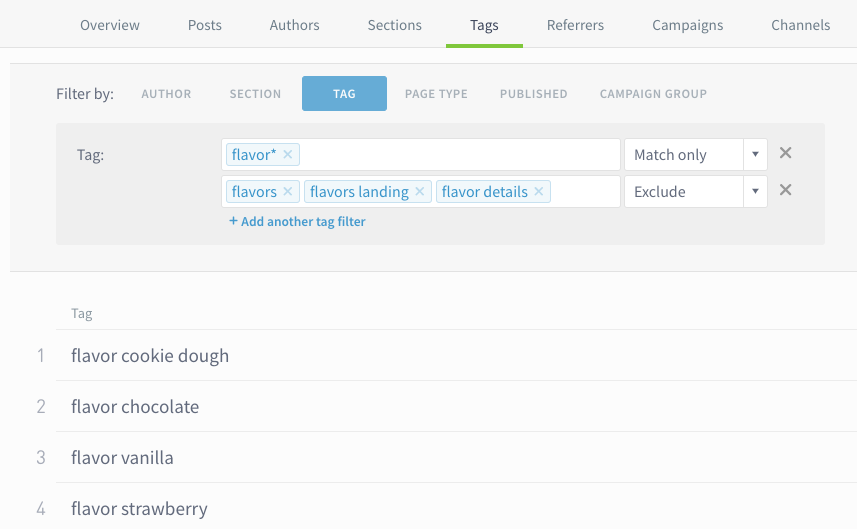4 content strategy questions you can answer with tagging

Ever stare at the “tags” option in your CMS and wonder, “What good are these?”
Good news: tags can reveal insights about everything, from which content format to which products audiences prefer. Bad news: they do take some forethought and planning to make the most out of them. Need some inspiration? Here are four examples of tagging systems that answer questions about what audiences care about.
Does my content have a word count sweet spot?
To better understand whether the overall impact of a piece of content is connected in any way to its layout, we studied the success of various media formats in terms of engaged time and referral traffic.
We found that long-form content, defined as “content that is not a video or slideshow post with more than 1,000 words” drives engagement and appears to be a good source of growth. It attracts new readers keeps them engaged nearly twice as long as normal articles (between 200 and 600 words).
However, each audience is unique. Yours may be more engaged with normal or short-form content. Or, maybe you have fairly equal engagement regardless of the length. By tagging content with a word count range, like what The Star does, you’ll be able to compare how long-form and short-form content perform with your audience. Sort by engaged time or social referrals to see if certain content lengths outperform based on your goals.

Am I using my resources effectively?
If you don’t have an automated way to tag each post with content length, consider categorizing your content according to three to four different “types.” Certain types of content, like a feature, require an investment of your time, and you want to make sure your audience finds them valuable. Using this kind of tagging structure, Conde Nast site, Ars Technica, sees if the time and resources they spend on a report, which tends to be more labor-intensive, versus a blog post, are worth it to their readers.

You can implement this tagging system with other types of content, such as slideshows, infographics, quizzes, videos, etc., to see the type of engagement you are getting from each, further helping inform your content strategy.
What topics do readers care about the most?
We also see publishers, including IEEE Spectrum, tag their content by topic and subtopic. Incorporating topical keywords in an article and its metadata isn’t just effective for SEO or onsite navigation. Topical tags are also your most powerful asset in building a robust content strategy.


An organization’s content strategy starts at a high level—understanding which sections of content are best for growth or curation. Topical tags encourage each team to understand where their core competencies lie, building a sort of micro-strategy unique to the community they serve.
Enabling each team or individual to see what works and what doesn’t allows them to write based on their core competencies—if you only wrote about 5 things ever again, what should they be? (For more on this, checkout out our webinar, Finding Your Tribe: How to Build Communities Online.)
Topical tags can also point to areas of content that require more resources, which can inform hiring. Some publishers have even combined topical sections and tags, to discover that a particular topic performs better than a top-level navigation section.
Start by looking at the sections or big categories your organization writes about. Then, break it down from there. You’ll start to get a sense of what content your audience is already telling you they love.
Which products are readers most interested in?

If you’re a brand and have a few different products you are writing about, tagging by product type can help you understand exactly what people pay attention to when it comes to what you sell. The ice cream business in the example above tags their content based on their different flavors, but this strategy could apply to anything from software to soft drinks.
Understanding what products your readers are paying the most attention to can not only inform how you write about each, but it could potentially inform product decisions. You’re already paying to produce the content, so why not use the data about it to support product research as well?
Talking about your own products can be a balancing act. Some audiences don’t want to hear about it at all, while others are searching for specific information. If a product is not receiving the attention from your audience that you’d like it to, tags can help you decide how to cover or distribute differently to see what works best.
Implementing a robust tagging system is a gateway to understanding your audience
There are many other great ways to tag your content to answer questions you may have about your content and audience that we didn’t mention here, such as geography, tone, and more. Tags can be used to track any grouping or delineation you want.
Whatever your goal may be for implementing a tagging system, whether organization, findability, or finding the strengths and gaps within your content strategy, there is one common thread: understanding what your audience cares about. Each organization and audience is different, each with a unique goal.
Tags can support that unique goal. Make sure you have the ability to track them and put the data to work for you.